Have you ever wondered if milk is good for your plants? As a gardener, you want to provide the best care and nutrition for your beloved foliage. Milk has traditionally been seen as having some controversial properties when it comes to gardening! Is this true? Does it really do more harm than good? In this article, we’ll explore the effects of using milk on plants and learn why it might actually be beneficial. Discover useful tips on how to get the most out of your plant-care routine by incorporating milk into your daily tasks – from preventing disease and fungus outbreaks to improving soil texture and promoting healthy growth. Will answer those nagging questions like “how much should I water my plants with milk?, “ “what types of plants benefit from a milk solution?” And ultimately give insight on whether or not adding milk in small amounts can increase overall success in even the pickiest garden areas!
Effect of Milk on Plant Growth
As avid gardeners or plant enthusiasts, it’s important to understand the different ways which can foster the growth of plants. While plant nutrients and light are the essential elements in the growth of plants, water, soil texture, and temperature also play significant roles. However, one may wonder how the use of milk in plants could impact the growth process.
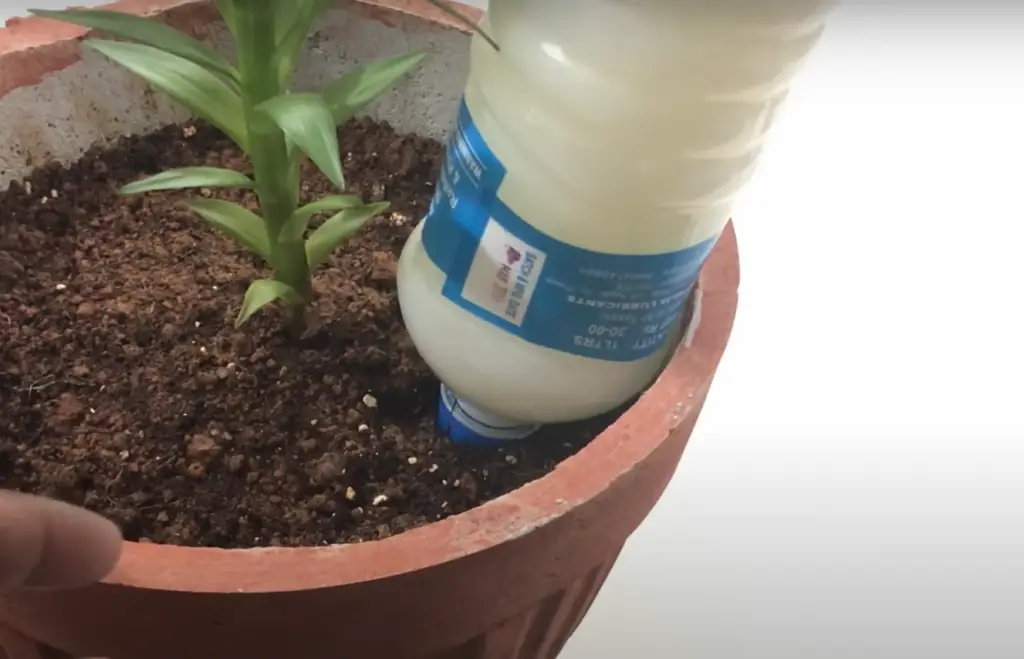
The truth is, milk is highly beneficial to plant growth. It enhances soil fertility, especially when the milk is directly applied to the soil before the plants are watered. Milk provides the necessary nutrients that plants require, such as calcium and proteins, which are essential for the growth and development process. Additionally, it contains sugars, which serve as food for the beneficial microorganisms present in the soil. With milk in your arsenal of growth strategies, your plants are set to flourish in unprecedented ways! [1]
Plants that Like Milk
Milk can be a beneficial resource for multiple plant species. Some of the more common plants that benefit from milk are roses, tomatoes, squash, and eggplants. Here’s how milk benefits each one:
- Roses: Milk helps boost the growth of roses by increasing their blooming capacity. The lactose in the milk helps promote new flower buds while simultaneously protecting them from diseases like black spot and powdery mildew. For best results, mix together equal parts of skimmed milk and water before pouring it onto the soil around your rose bushes.
- Tomatoes: Tomato plants also love a bit of extra nourishment from time to time. To do this, mix together 1 gallon of warm water with 1 cup of skimmed milk and pour it over the soil surrounding your tomato plants. Doing this helps to prevent fungal diseases that can cause fresh tomatoes to rot.
- Squash: Squash plants need calcium for healthy growth which is found in abundance within milk! For best results, mix together 2 gallons of warm water with 4 cups of whole or low fat milk before pouring it around squash plants. This will help them grow more quickly and successfully.
- Eggplants: Eggplant plants require plenty of calcium in order to achieve optimal growth rates. To do this, use a mixture of 1 gallon of warm water with 1/4 cup skimmed or whole milk and apply to the soil around eggplants every couple of weeks. This will help encourage bigger, healthier eggplants! [2]
All these plants will need extra nutrients and moisture for optimal growth. Milk is a great way to provide both of these elements in one go!
What Types of Milk To Use for Plants
When considering the types of milk to use for plants, it’s important to note that not all milks are created equal. Whole and low-fat milk contains more calcium than skimmed or non-dairy alternatives such as soy, almond, coconut etc. Therefore, it is best to opt for whole or low-fat milk when applying directly to soil. Additionally, if you choose to water your plants with a mixture of water and milk then skimming down the amount of fat can be beneficial; otherwise using regular tap water will do just fine!
Types Of Milk That Can’t Be Used For Plants
It’s not just the type of milk that you need to be aware of when using it for gardening purposes, but also the types that should never be used. One such type is ultra-high temperature (UHT) pasteurized milk, which has been heated at temperatures higher than what is necessary for pasteurization.

This makes it impossible for beneficial bacteria to survive and so UHT milk can do more harm than good if added directly to soil or as part of a watering mixture. Additionally, flavored milks such as chocolate and strawberry should also be avoided – these contain additional ingredients that may interfere with plant growth or attract pests.
Basic Guidelines for Using Milk for Plants
When it comes to using milk for plants, there are a few basic guidelines that should be followed in order to ensure healthy growth and flourishing results.
How To Use Milk for Plants
- Begin by using a low-fat or skim milk, as this will not clog up the soil in your plants.
- Mix one part of milk with four parts of water in a container and stir it until it is well blended.
- Pour the mixture onto the soil around your plant’s base, making sure to avoid getting any of it on the leaves or stems of the plant itself.
- Watering should be done once every two weeks during warm weather months and monthly during cooler months; do not use too much milk at one time, as this could potentially harm your plants.
- Always remember to check the pH balance of your soil before applying any liquids like milk, as this can make a huge difference in the growth of your plants.
- After watering your plants with milk, be sure to add some compost or mulch to help keep the soil moist and provide additional nutrients.
- Finally, check regularly for signs of distress in your plants such as wilting and discoloration; if any are present, stop using the milk mixture immediately and water with plain water until the issue is resolved.
- Following these simple steps will ensure that you get the most out of using milk for your plants. With regular use and proper care, you’ll be able to enjoy vibrant flowers and lush foliage all year round!
How to Clean Plant Leaves with Milk
Milk can be used as a natural cleaner for plants. Due to its low pH level, it can both clean and protect plant leaves from dust and dirt build-up. To start, fill a spray bottle with one part milk and four parts water before spraying the mixture onto your plant’s leaves. Leave this for around two minutes before gently wiping away any residue with a soft cloth or paper towel. [4] Doing this once every few weeks will help keep your plants looking their best!
Pros and Cons of Milk in Gardens
Using milk in gardens can be a great way to provide additional nutrients or deter pests, but like with any gardening technique there are both pros and cons that should be considered.

Pros:
- Milk is full of calcium, vitamins, and other minerals which help promote healthy plant growth.
- It’s an all natural solution for pest prevention.
- It also helps make the soil more fertile by increasing its water holding capacity.
Cons:
- If applied too frequently it can have an adverse effect on plant health due to overfeeding or root rot.
- Unpasteurized milk can contain harmful bacteria that could potentially damage plants. [5]
- Milk may attract certain types of pests, such as slugs and snails.
Overall, using milk in gardens can be a great way to provide additional nutrients and deter pests when done properly. However, it’s important to consider the pros and cons before deciding whether or not it’s right for your garden.
Precautions When Using Milk for Plants
When using milk for plants it’s important to take certain precautions in order to ensure successful and healthy growth.
- Always use fresh, pasteurized milk when possible – this means heating at least 161°F (72°C) to kill off potentially harmful bacteria.
- Use only a mixture of one part of milk with four parts of water; any more than that could cause root rot or overfeeding issues.
- Never use flavored milks as the added ingredients can attract pests or interfere with plant growth.
- Do not apply directly onto leaves or stems, but instead pour around the base of your plants.
- Check pH levels before applying liquid like milk, as this can make a big difference in the success of your plants.
- Inspect regularly for signs of distress such as wilting or discoloration – if any are present, stop using milk and water with plain water until the issue is resolved.
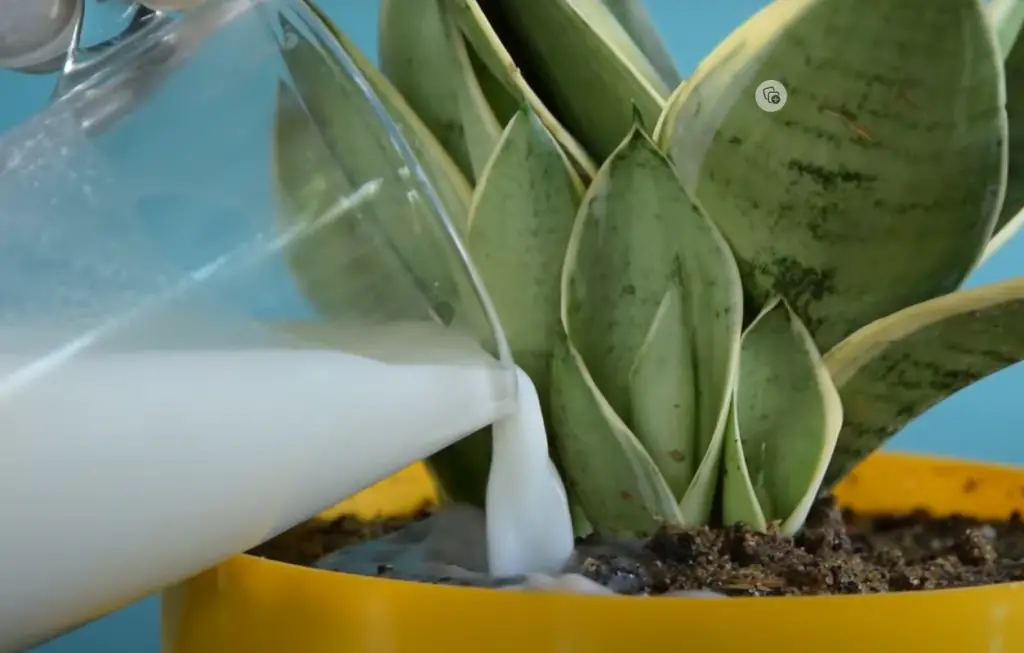
Following these precautions will help ensure that you get the most out of using milk for your plants.
Other Uses of Milk on Plants
Milk is not just a great fertilizer for plants but can also be used in other ways to help improve the health of your garden. Here are some other ways that you can use milk on plants:
- As a Pest Repellent: Mixing one part of milk with four parts of water and spraying it onto foliage or stems can be an effective natural pest repellent, as many pests do not like its smell.
- To Treat Fungal Infections: Warm milk can be applied directly to the affected area in order to combat fungal infections such as powdery mildew.
- For Watering Plants: Since milk contains additional nutrients and minerals, it can make a good alternative to plain water for watering plants. However, it should be used sparingly and only when regular soil pH tests suggest a need for additional nutrients.
- To Promote Plant Growth: Adding milk to the soil around your plants can help stimulate root growth and promote healthy foliage. This is because dairy products are rich in calcium which helps support growing roots.
By using milk in these other ways you can get even more out of this versatile product for your garden!
Tips
When using milk on plants, there are a few tips that can help ensure successful use:
- Always use pasteurized milk when possible as this will reduce the risk of harmful bacteria.
- Only use it sparingly, once every two weeks during warm months and monthly during cooler months.
- Check soil pH levels before applying, as this can make a big difference in the success of your plants.
- Make sure to mix one part of milk with four parts of water – any more than that could cause root rot or overfeeding issues.
- Avoid getting any of the mixture onto foliage or stems as this could potentially harm plants.
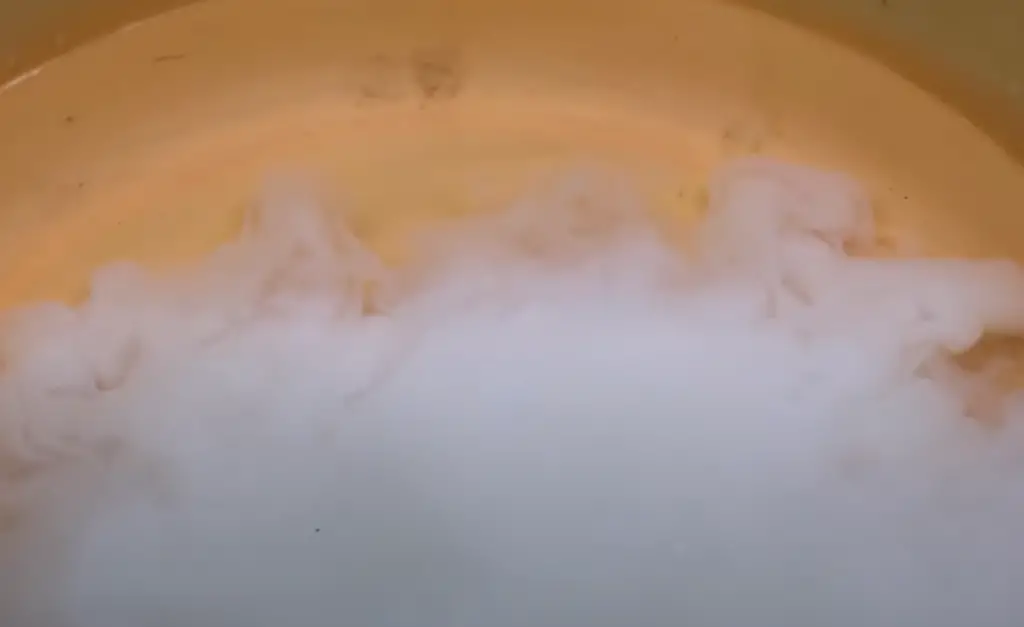
These tips can help you effectively use milk as a plant fertilizer. By consistently applying it and taking good care of your plants, you can have beautiful flowers and healthy foliage throughout the year.
FAQ
What Happens When You Give a Plant Milk?
Giving a plant milk to your plants can provide them with extra nutrients. Plant milks are typically made from nuts, seeds, or grains and contain carbohydrates, proteins, fats, minerals, vitamins, and other trace elements that help plants to grow and thrive. Depending on the type of plant milk you use, you may also be providing your plants with added calcium, magnesium, iron, zinc, and potassium – all of which are essential for healthy growth. Additionally some plant milks may also offer beneficial bacteria such as probiotics which can further enhance soil fertility. Ultimately giving a plant milk to your plants can help them stay healthy and strong and give them the best chance at producing lush foliage and bountiful fruits or flowers.
Can I Pour Milk on My Tomato Plants?
Yes, you can pour milk on your tomato plants. Milk is full of calcium, vitamins, and other minerals which are all beneficial for healthy plant growth.
Additionally, always remember to water your plants after adding the milk solution and allow them some time to soak up all the nutrients they need for healthy growth.Can I Put Breast Milk in Plants?
Yes, you can put breast milk in plants. Research has shown that breast milk can help to nourish and promote healthy growth in some species of plants. However, it is important to be mindful of the amount you are adding as too much could cause nutrient burn or imbalance. Additionally, if you plan on consuming your plant’s produce, make sure that any exposed parts of the plant have been washed thoroughly before eating. If in doubt, contact a professional horticulturist for advice.
Do Plants Grow Better With Milk or Water?
It depends on the type of plant and the soil conditions. Milk is full of calcium, vitamins, and other minerals which are all beneficial for healthy plant growth. However, if the soil pH levels are already healthy then watering with plain water can be just as effective. It’s best to do a soil test before deciding whether or not you should use milk for your plants.
Is Spoiled Milk Good for Plants?
Yes, spoiled milk can be beneficial for plants. Spoiled milk contains a variety of nutrients such as phosphorus, nitrogen, calcium and magnesium that are essential for healthy plant growth. It also has an acidic pH level which can help to reduce the alkalinity of some soils. However, it is important to consider the associated risks when using spoiled milk on your plants; it can potentially introduce bacteria and other microorganisms into the soil which may cause problems for your plants if not handled properly.
Additionally, do not use milk that has been left out at room temperature or stored in direct sunlight since this could increase the risk of introducing harmful microorganisms. With careful handling and proper dilution, using spoiled milk can be an effective way to provide your plants with essential nutrients.How Often Should You Use Milk on Plants?
It depends on the plant species and the condition of your soil. Generally, it’s best to use milk or other dairy products in moderation. Occasionally adding small amounts of diluted milk to your soil can help provide essential nutrients like nitrogen, phosphorus, and potassium for healthy plant growth.
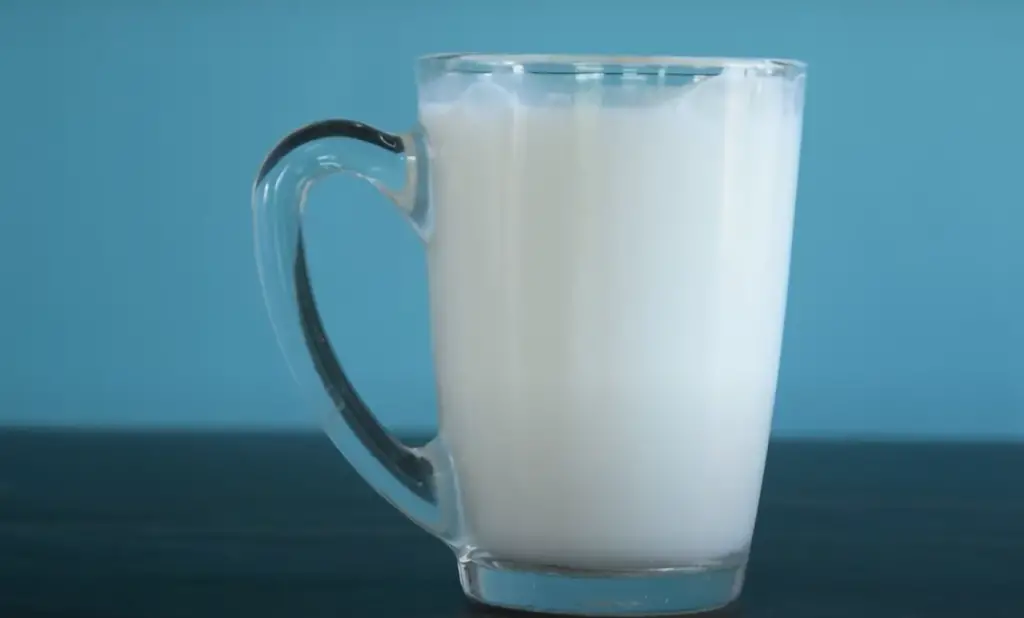
However, too much can cause a buildup of harmful salts that can stunt or even kill plants. So be sure to follow package instructions carefully and only apply a light sprinkling when needed.
Can I Pour Milk Directly on Plants?
No, pouring milk directly onto plants is not recommended. Milk contains lactose and other sugars that can encourage bacterial growth in the soil if used in large quantities. It also has high levels of nitrogen which can burn the plant’s roots and leaves. Additionally, milk encourages the growth of fungal spores which can cause permanent damage to your plants. For these reasons, it’s best to avoid using milk on or around sensitive plants. If you must use milk for fertilizer, dilute it with an equal part of water first to reduce its potency. Remember to always test any new fertilizer in a small area before spreading it over your entire garden!
Can You Use Milk for Succulent Plants?
No, you should not use milk for succulent plants. Milk is composed of many sugars and proteins which can cause root rot in succulents. Moreover, the fats found in milk can cause fungi or bacteria to develop on your plants. It is best to provide your succulent with a nutrient-rich soil mix that will keep it healthy and strong. If you want to give your succulents an extra boost, look into using a diluted liquid fertilizer specifically formulated for them! This way, you won’t risk introducing any potential harmful substances from milk into their environment.
Can You Use Milk for Indoor Plants?
Yes, you can use milk for your indoor plants. Milk contains nitrogen and phosphorus which are two important nutrients that help promote strong root growth in plants. Additionally, the calcium found in milk helps to prevent yellowing of leaves while also strengthening cell walls. It is important to mix the milk with some water before applying it to your plants. A good ratio is one part milk to four parts water. Also be aware that over time mold and bacteria can form from undiluted milk, so make sure to discard any unused diluted milk after 7-10 days of use. Lastly, avoid using skim or low fat milks as they have far fewer nutritional benefits than whole milk. Ultimately, using small amounts of diluted cow’s or goat’s milk can be a great way to feed your indoor plants.
Useful Video: Use Milk In The Garden And Be Ready For These 8 Surprises | Milk Uses
Conclusions
All in all, milking your plants is not only a beneficial gardening practice, but it can also turn into an enjoyable routine for you and your foliage. Although some people worry about the negative effects of milk in their lawns and gardens, research has indicated that this liquid ingredient could be just what gardeners are looking for. From nourishing the soil to deterring disease and improving growth potential, milk offers many advantages which can benefit any plant-care regimen. If you’re looking to take your gardening beyond the basics, why not give milking your plants a go? The rewards are sure to exceed expectations, and you might even find a newfound joy in caring for success in your home gardens! Plus, if you have any questions along the way, don’t forget to reach out to your local horticulture store or nursery for helpful advice and suggestions – they’d be more than happy to help you get the most from your green-thumb endeavors!
References:
- https://www.newzealandrabbitclub.net/is-it-good-to-give-milk-to-plants/#:~:text=The%20answer%20to%20this%20question,for%20plant%20growth%20and%20development.
- https://www.groworganic.com/blogs/articles/how-to-grow-eggplants#:~:text=Eggplants%20require%20a%20lot%20of,not%20fruit%20at%20peak%20levels.
- https://library.e.abb.com/public/81ad901d59844fd3ba52a1ac77bcf3b6/TD_RandC_019-EN_A.pdf
- https://blog.mytastefulspace.com/2019/11/06/how-to-clean-house-plants-leaves/
- https://www.fda.gov/food/buy-store-serve-safe-food/dangers-raw-milk-unpasteurized-milk-can-pose-serious-health-risk





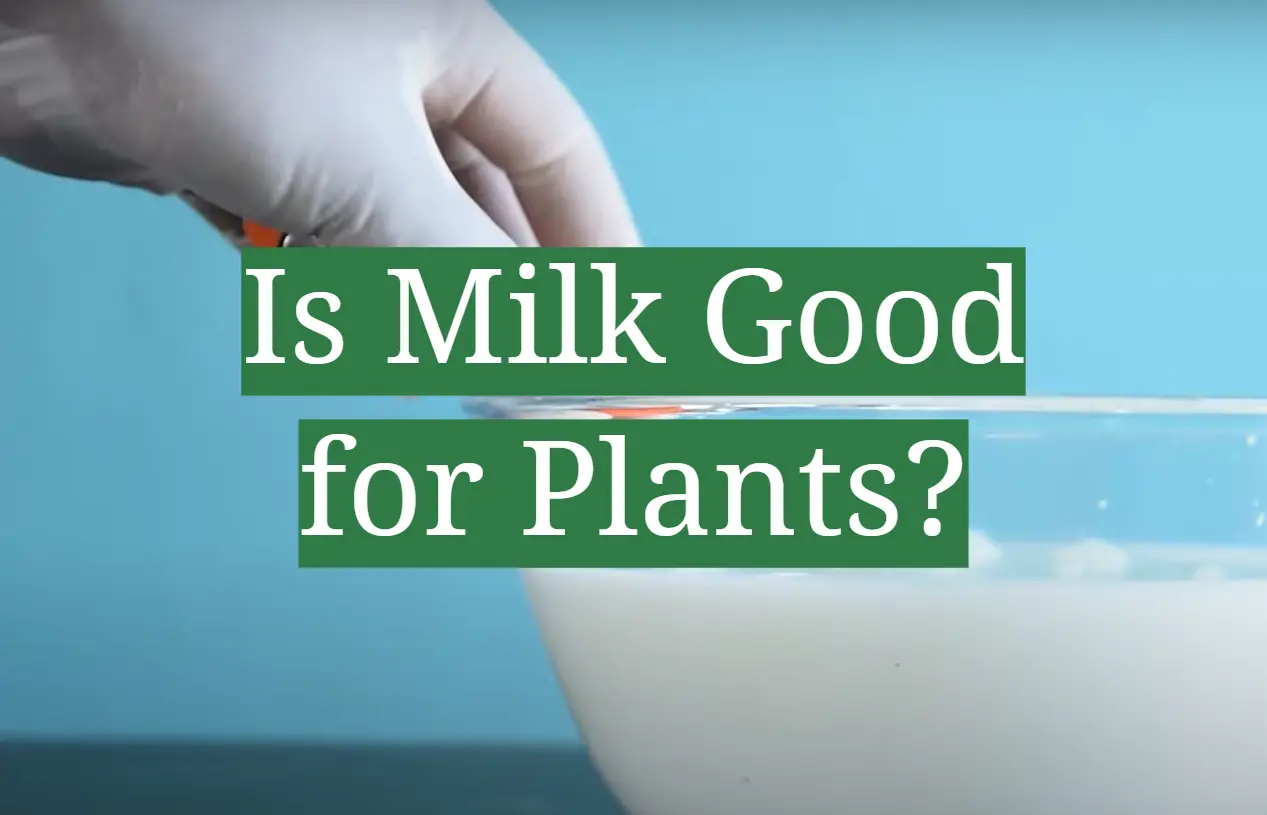




Leave a Reply
View Comments